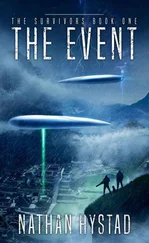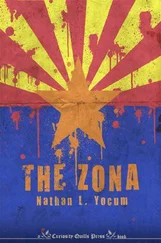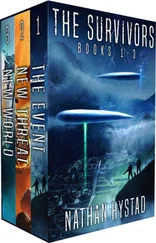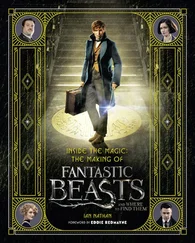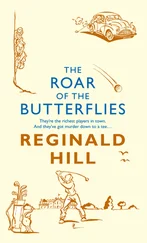There was a king in Sāvatthi who addressed a man and asked him to round up all the persons in the city who were blind from birth. When the man had done so, the king asked the man to show the blind men an elephant. To some of the blind men he presented the head of the elephant, to some the ear, to others a tusk, the trunk, the body, a foot, the hindquarters, the tail, or the tuft at the end of the tail. And to each one, he said, “This is an elephant.”
When he reported to the king what he had done, the king went to the blind men and asked them, “Tell me, blind men, what is an elephant like?”
Those who had been shown the head of the elephant replied, “An elephant, your majesty, is just like a water jar.” Those who had been shown the ear replied, “An elephant is just like a winnowing basket.” Those who had been shown the tusk replied, “An elephant is just like a plowshare.” Those who had been shown the trunk replied, “An elephant is just like a plow pole.” Those who had been shown the body replied, “An elephant is just like a storeroom.” And each of the others likewise described the elephant in terms of the part they had been shown.
Then, saying, “An elephant is like this, an elephant is not like that! An elephant is not like this, an elephant is like that!” they fought each other with their fists.
And the king was delighted.
— Inspired Utterances of the Buddha
PROLOGUE. Late Summer 1988
IF SAMUEL HAD KNOWN his mother was leaving, he might have paid more attention. He might have listened more carefully to her, observed her more closely, written certain crucial things down. Maybe he could have acted differently, spoken differently, been a different person.
Maybe he could have been a child worth sticking around for.
But Samuel did not know his mother was leaving. He did not know she had been leaving for many months now — in secret, and in pieces. She had been removing items from the house one by one. A single dress from her closet. Then a lone photo from the album. A fork from the silverware drawer. A quilt from under the bed. Every week, she took something new. A sweater. A pair of shoes. A Christmas ornament. A book. Slowly, her presence in the house grew thinner.
She’d been at it almost a year when Samuel and his father began to sense something, a sort of instability, a puzzling and disturbing and sometimes even sinister feeling of depletion. It struck them at odd moments. They looked at the bookshelf and thought: Don’t we own more books than that? They walked by the china cabinet and felt sure something was missing. But what? They could not give it a name — this impression that life’s details were being reorganized. They didn’t understand that the reason they were no longer eating Crock-Pot meals was that the Crock-Pot was no longer in the house. If the bookshelf seemed bare, it was because she had pruned it of its poetry. If the china cabinet seemed a little vacant, it was because two plates, two bowls, and a teapot had been lifted from the collection.
They were being burglarized at a very slow pace.
“Didn’t there used to be more photos on that wall?” Samuel’s father said, standing at the foot of the stairs, squinting. “Didn’t we have that picture from the Grand Canyon up there?”
“No,” Samuel’s mother said. “We put that picture away.”
“We did? I don’t remember that.”
“It was your decision.”
“It was?” he said, befuddled. He thought he was losing his mind.
Years later, in a high-school biology class, Samuel heard a story about a certain kind of African turtle that swam across the ocean to lay its eggs in South America. Scientists could find no reason for the enormous trip. Why did the turtles do it? The leading theory was that they began doing it eons ago, when South America and Africa were still locked together. Back then, only a river might have separated the continents, and the turtles laid their eggs on the river’s far bank. But then the continents began drifting apart, and the river widened by about an inch per year, which would have been invisible to the turtles. So they kept going to the same spot, the far bank of the river, each generation swimming a tiny bit farther than the last one, and after a hundred million years of this, the river had become an ocean, and yet the turtles never noticed.
This, Samuel decided, was the manner of his mother’s departure. This was how she moved away — imperceptibly, slowly, bit by bit. She whittled down her life until the only thing left to remove was herself.
On the day she disappeared, she left the house with a single suitcase.
PART ONE. THE PACKER ATTACKER, Late Summer 2011
THE HEADLINE APPEARS one afternoon on several news websites almost simultaneously: GOVERNOR PACKER ATTACKED!
Television picks it up moments later, bumping into programming for a Breaking News Alert as the anchor looks gravely into the camera and says, “We’re hearing from our correspondents in Chicago that Governor Sheldon Packer has been attacked.” And that’s all anyone knows for a while, that he was attacked. And for a few dizzying minutes everyone has the same two questions: Is he dead? And: Is there video?
The first word comes from reporters on the scene, who call in with cell phones and are put on the air live. They say Packer was at the Chicago Hilton hosting a dinner and speech. Afterward, he was making his way with his entourage through Grant Park, glad-handing, baby-kissing, doing all your typical populist campaign maneuvers, when suddenly from out of the crowd a person or a group of people began to attack.
“What do you mean attack ?” the anchor asks. He sits in a studio with shiny black floors and a lighting scheme of red, white, and blue. His face is smooth as cake fondant. Behind him, people at desks seem to be working. He says: “Could you describe the attack?”
“All I actually know right now,” the reporter says, “is that things were thrown.”
“What things?”
“That is unclear at this time.”
“Was the governor struck by any of the things? Is he injured?”
“I believe he was struck, yes.”
“Did you see the attackers? Were there many of them? Throwing the things?”
“There was a lot of confusion. And some yelling.”
“The things that were thrown, were they big things or small things?”
“I guess I would say small enough to be thrown.”
“Were they larger than baseballs, the thrown things?”
“No, smaller.”
“So golf-ball-size things?”
“Maybe that’s accurate.”
“Were they sharp? Were they heavy?”
“It all happened very fast.”
“Was it premeditated? Or a conspiracy?”
“There are many questions of that sort being asked.”
A logo is made: Terror in Chicago. It whooshes to a spot next to the anchor’s ear and flaps like a flag in the wind. The news displays a map of Grant Park on a massive touch-screen television in what has become a commonplace of modern newscasting: someone on television communicating via another television, standing in front of the television and controlling the screen by pinching it with his hands and zooming in and out in super-high definition. It all looks really cool.
While they wait for new information to surface, they debate whether this incident will help or hurt the governor’s presidential chances. Help, they decide, as his name recognition is pretty low outside of a rabid conservative evangelical following who just loves what he did during his tenure as governor of Wyoming, where he banned abortion outright and required the Ten Commandments to be publicly spoken by children and teachers every morning before the Pledge of Allegiance and made English the official and only legal language of Wyoming and banned anyone not fluent in English from owning property. Also he permitted firearms in every state wildlife refuge. And he issued an executive order requiring state law to supersede federal law in all matters, a move that amounted to, according to constitutional scholars, a fiat secession of Wyoming from the United States. He wore cowboy boots. He held press conferences at his cattle ranch. He carried an actual live real gun, a revolver that dangled in a leather holster at his hip.
Читать дальше

